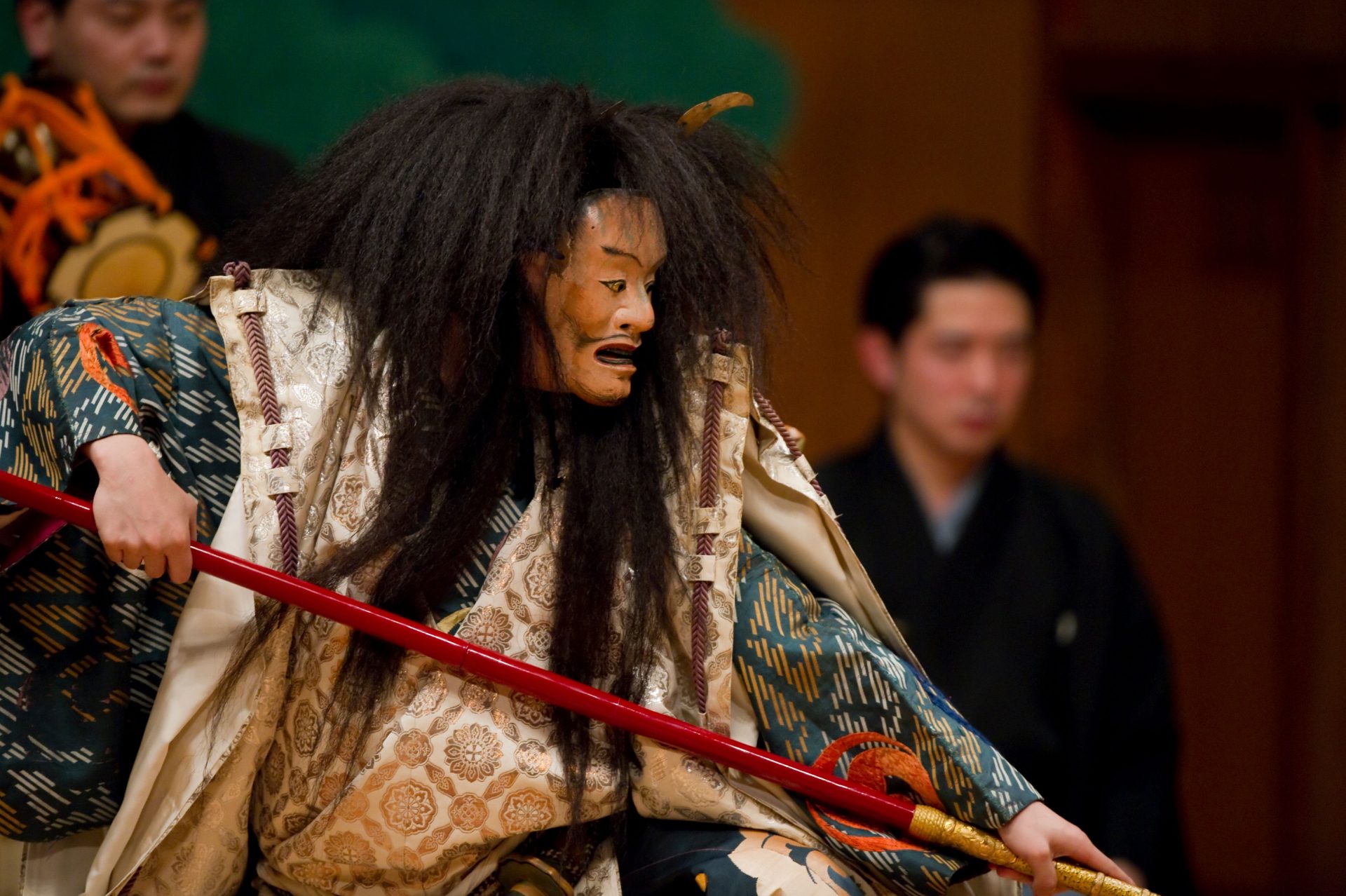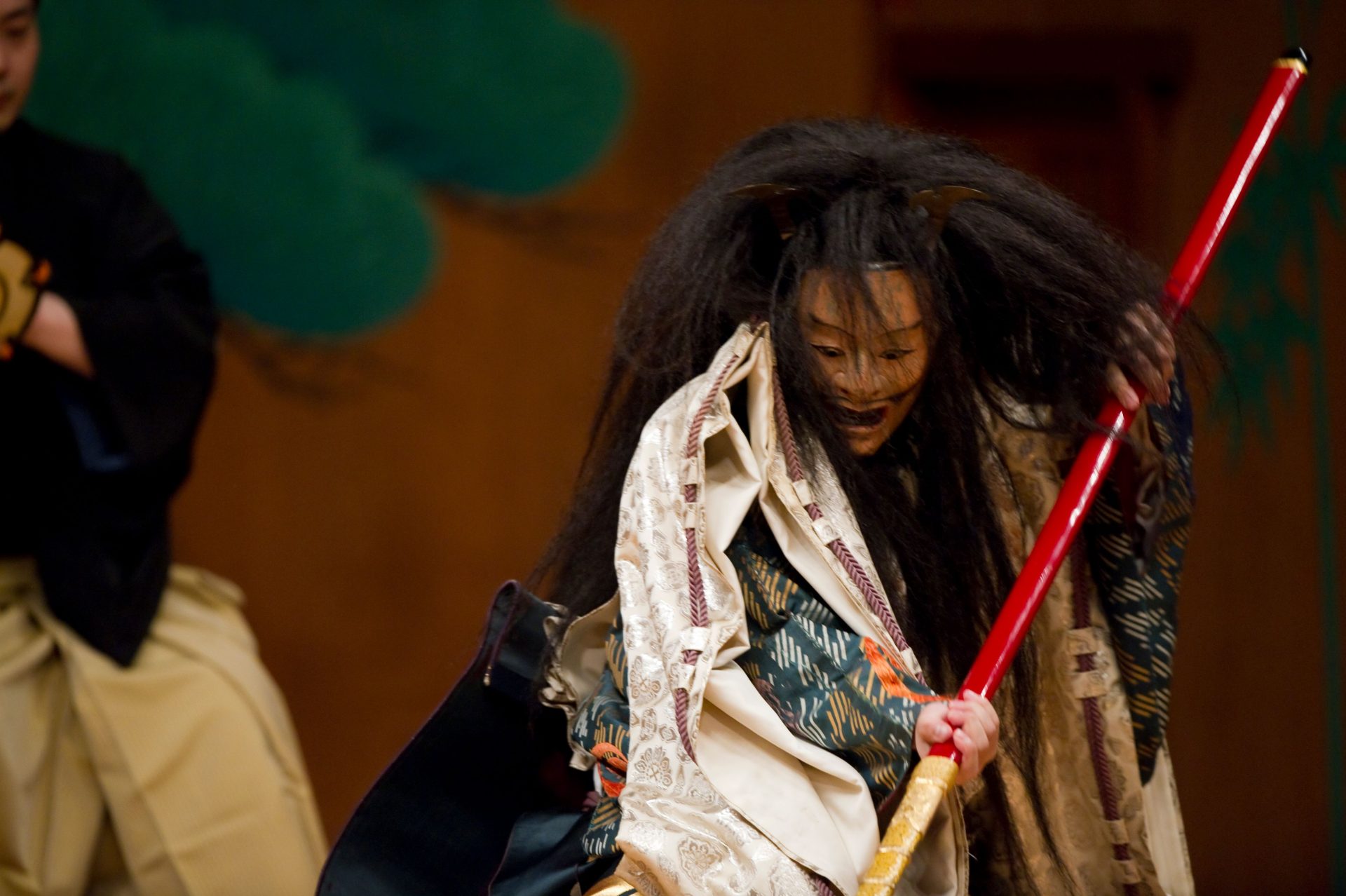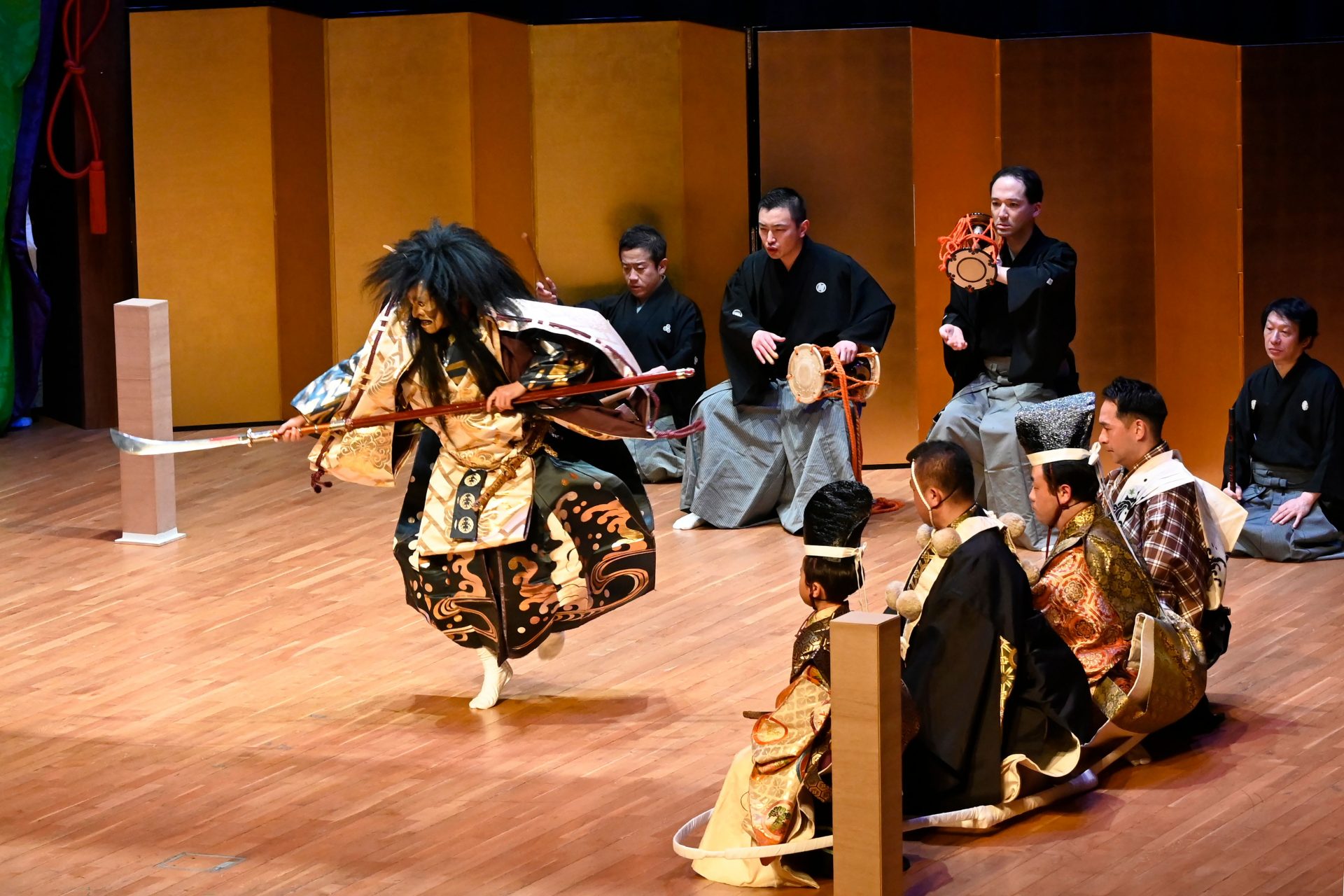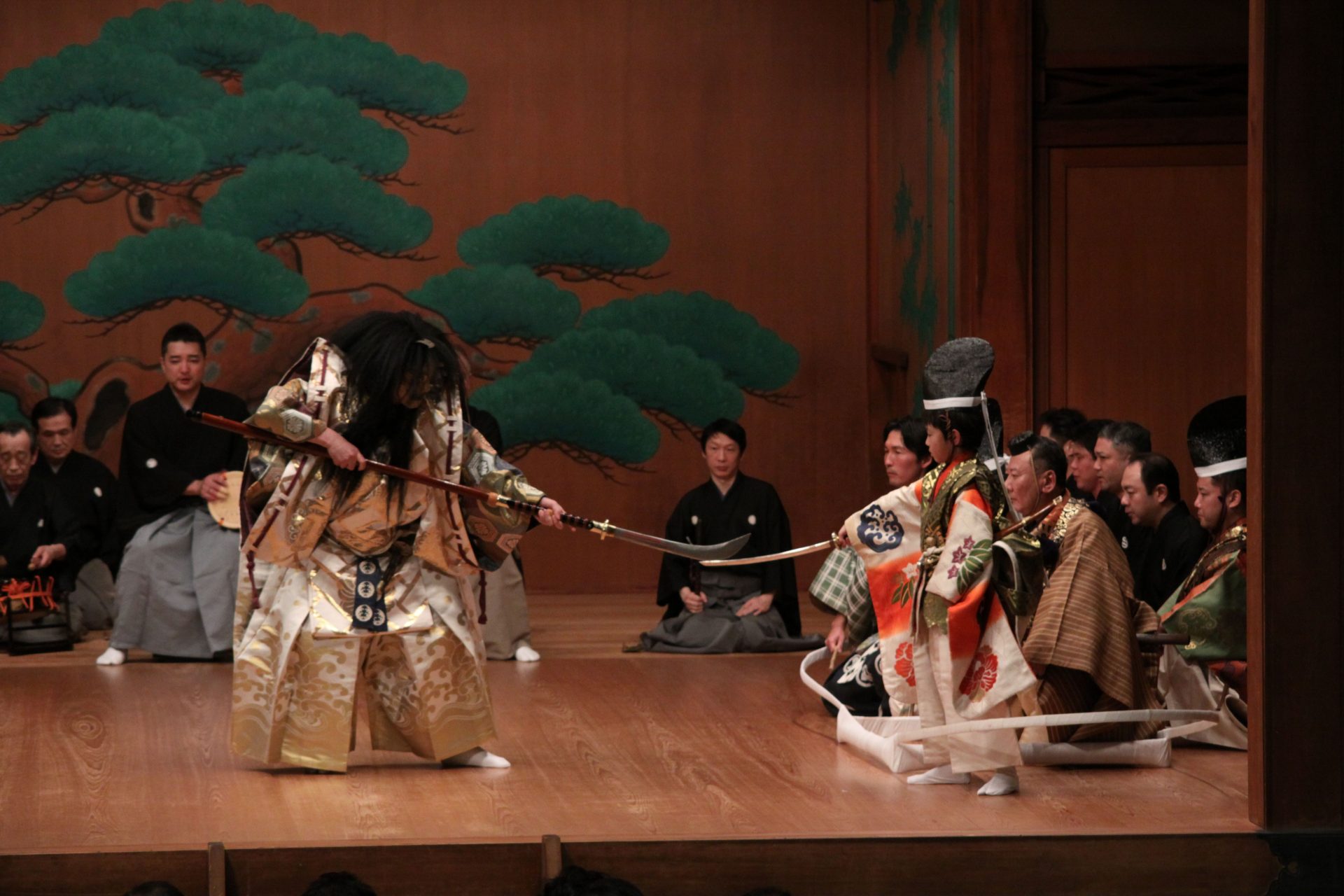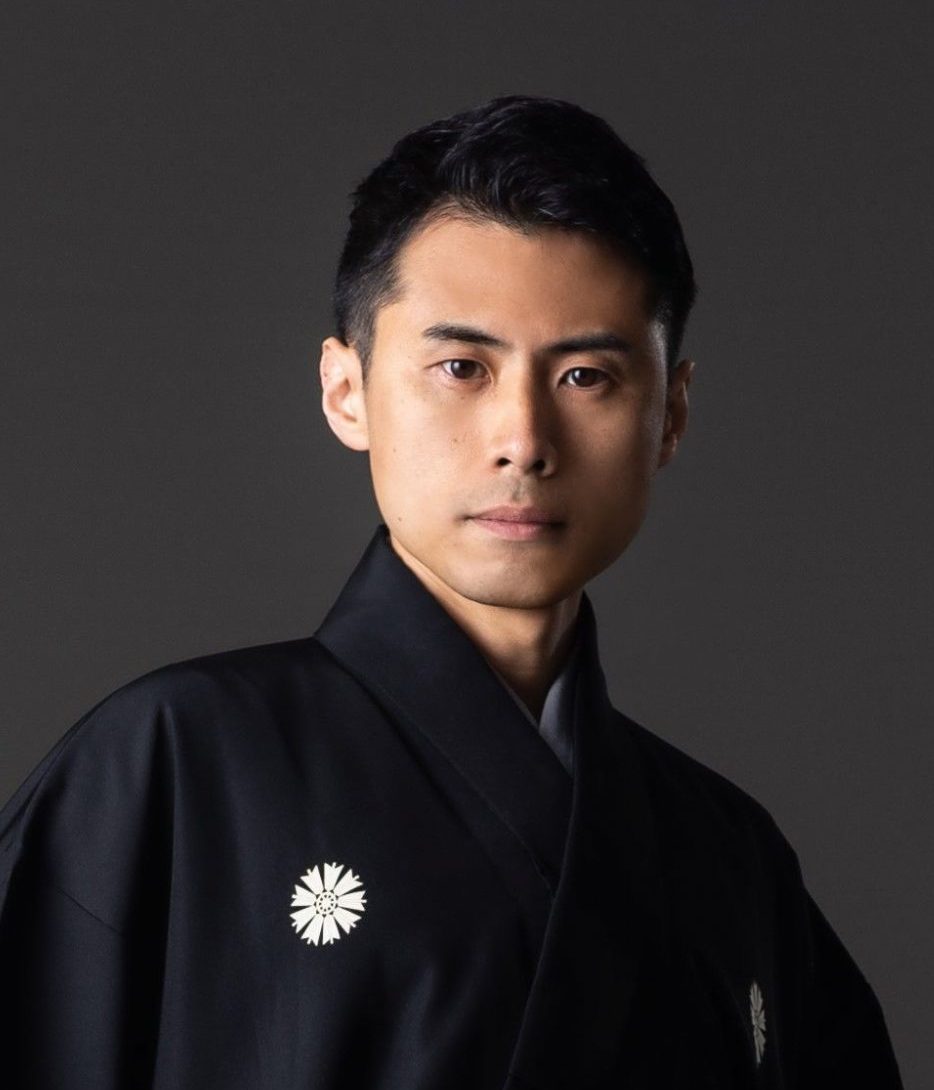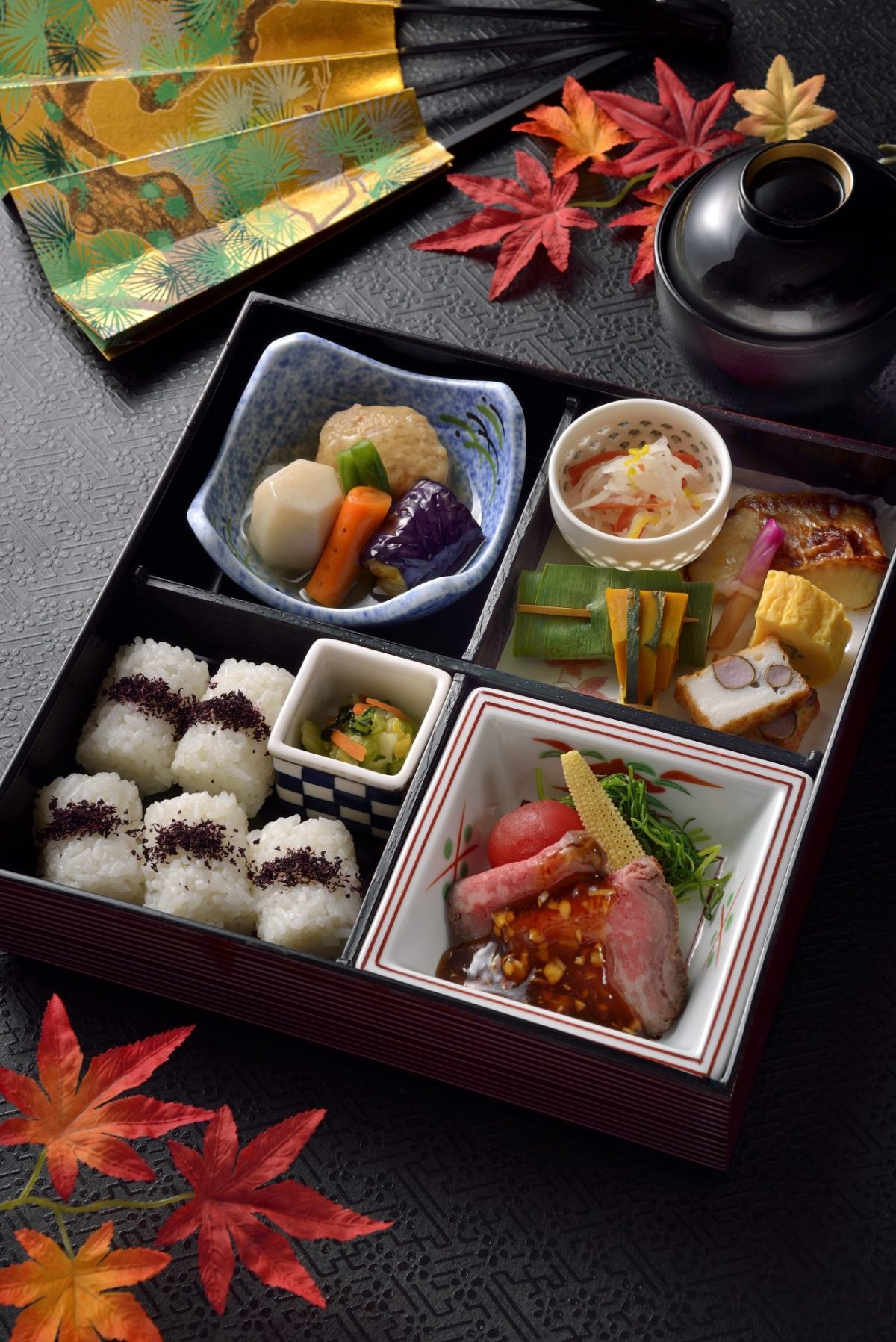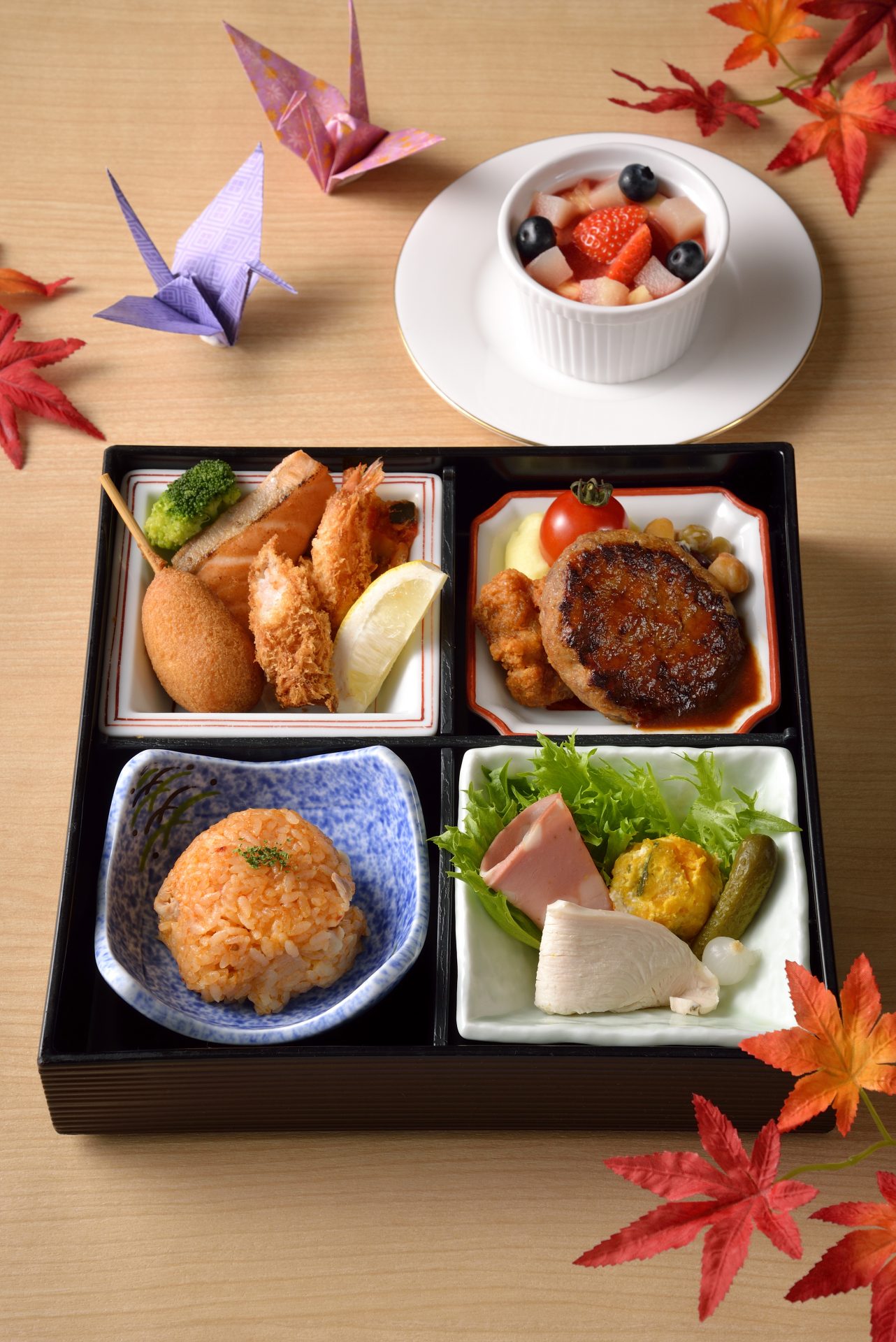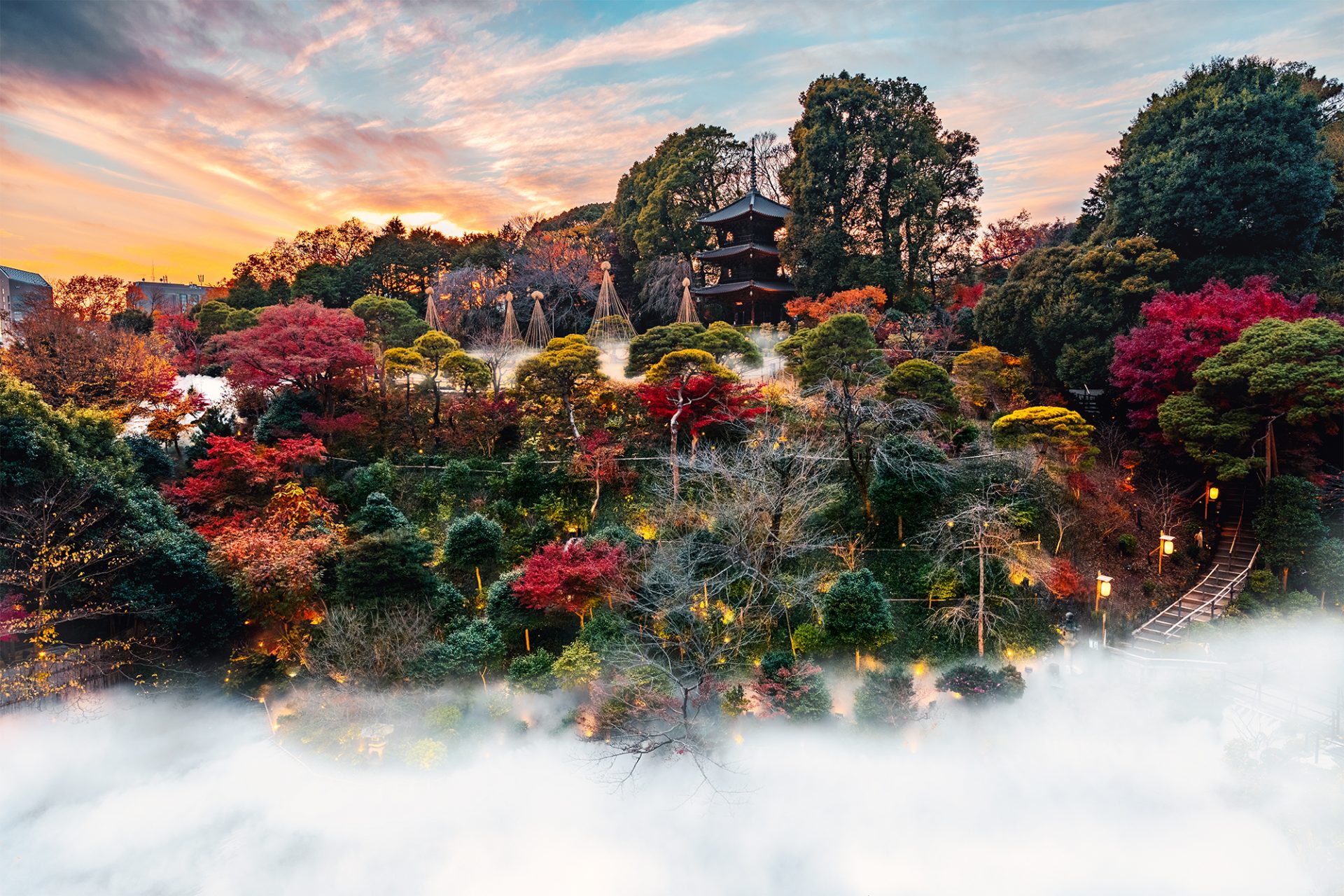Celebrating a Century since the Pagoda’s Relocation Family Noh Experience
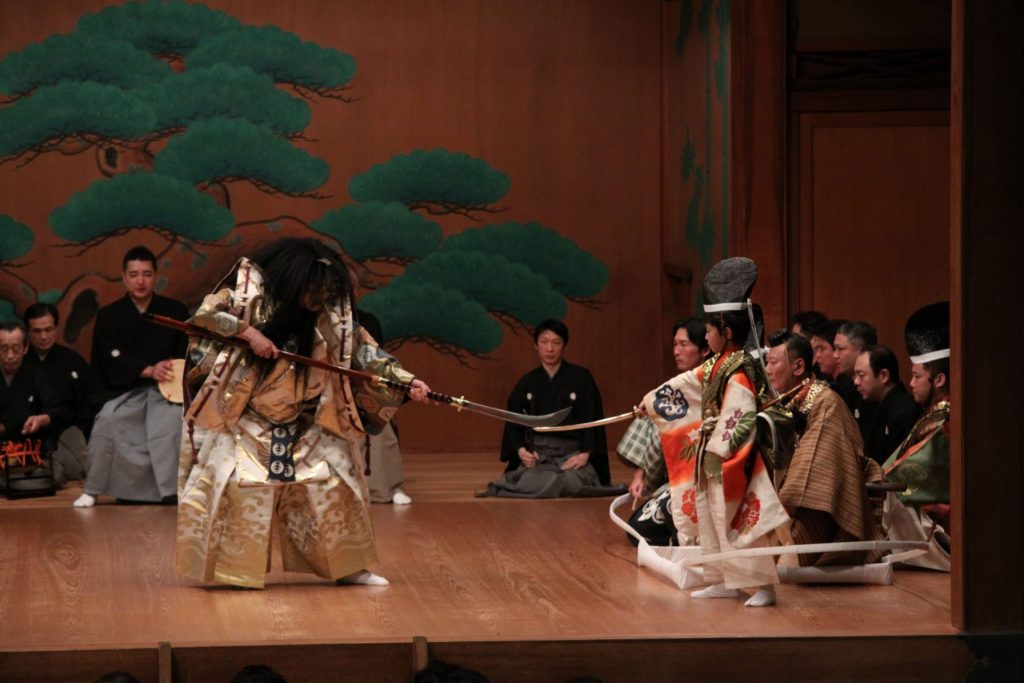
On Culture Day this November 3rd, experience the depth and wonder of Noh Theater.
Among the three Japanese traditional arts of Noh, Bunraku, and Kabuki, Noh boasts the longest history.
We will provide a description of the principles and instruments of Noh, as well as an excerpt from the famous play Funa Benkei.
The main role is played by Kazufusa Hosho, grand master of the Hosho School. It’s just the opportunity for the whole family to enjoy a traditional cultural experience.
The long tradition and rich aesthetic welcome you to the world of Noh.
Details and reservations
Date:
November 3rd (Monday, holiday)
Time:
Begins: 11:30 a.m., Lunch: 12:00 p.m. to 1:15 p.m., Demonstration and performance: 1:30 p.m. to 2:45 p.m.
In order to be enjoyed by guests of all ages, adults will be served Shokado Bento, while children will dine on kids’ bento, including three kids’ plate side dishes.
Location:
Hotel Bldg. 1st floor ballroom
Price:
■Reservations by internet only.
*Payment is to be made in advance by credit card.
*Points can be used for the event.
Adults (people age 13 or older): General: 12,000 yen, members: 11,280 yen
Children ages 7 to 12: General: 6,500 yen, members: 6,100 yen
Children ages 3 to 6: General: 5,500 yen, members: 5,170 yen
*Members of The Fujita Members can log in to their account from the link below, and make
reservations from “Event reservations.”
Reservation deadline: Available until 3 days before the performance (10/31)
The following cancellation fees are applied:
Date change or cancellation:
From 3 days before the performance: 100% cancellation fee
Notes
[When making reservations:]
Children must be accompanied by a guardian, and may not attend the event alone.
Please inform us if you have any food allergies, as we cannot accommodate allergy needs on the day of the event.
Prices include consumption tax and service charge.
Seating arrangements will be made by the hotel. Up to 10 people can be seated per table.
[At the event:]
The event may be subject to cancellation if minimum attendance numbers are not met.
Recording or photography of the performance are not permitted.
Please refrain from giving gifts to the performers.
The event takes place in Japanese.
Please do not wear sandals or short pants to the event.
As a general rule, guests may not attend only the lunch or the performance.
The Kabukimon Gate is closed. Please enter through the Hotel Bldg. front entrance.
Changes to services and contents may be made due to domestic/international factors or availability.
Photos are for illustrative purposes.
Demonstration and performance
We present a program in which guests of all ages can learn about and enjoy Noh.
A Noh actor gives explanations and introduces instruments, performing selections from Funa Benkei.
Guests can learn about the background of the story, its sounds and words, and the gestures used in acting.
■Know Noh!
Noh actor Kazufusa Hosho gives an easy-to-understand explanation of what Noh is, its costumes, and stage.
■Noh the instruments!
A performer tells about the flute and various drums, the sounds of Noh, and how to make them.
■Noh the chorus!
Learn about the “utai,” or chorus, with serves a central role in narrating the story.
■Performance: Funa Benkei (Excerpt from the Second Half)
The world and characters of Funa Benkei are described so that kids can understand it easily, and selected scenes are performed that convey the depth of the world of Noh.
Performance: Funa Benkei (Excerpt from the Second Half)
Synopsis
Minamoto no Yoshitsune is celebrated as one of the greatest military commanders of the Genpei War.
Despite his brilliance on the battlefield, he falls into conflict with his elder brother, Yoritomo, and is forced to flee the capital with his loyal retainers, seeking refuge in the western provinces.
As their party prepares to cross the sea by boat, dark clouds gather and violent waves rise.
Suddenly, the vengeful spirits of the defeated Taira clan—vanquished at the Battle of Dan-no-ura—emerge from the depths.
Among them appears the fierce ghost of Tairano Tomomori, consumed with resentment and seeking vengeance against Yoshitsune.
Surrounded by this ominous presence, Yoshitsune does not flee or resist.
Instead, he quietly meets Tomomori’s gaze, as if to accept the spirit’s anger and sorrow with unwavering resolve…
Highlights
What does it mean to be resigned to fate—to face one’s fate without drawing a sword?
This silent confrontation, filled with psychological intensity, is a hallmark of Noh’s unique expressive power.
This performance also features a kokata—a child actor in a pivotal role—whose composed presence on stage adds a striking dimension to the drama.
Cast
Tairano Tomomori: Kazufusa Hosho
Minamoto no Yoshitsune: Tomoharu Hosho
Performers
Hosho School of Noh
Kazufusa Hosho
Born in Tokyo in 1986, Kazufusa is the eldest son of Fusateru Hosho, the 19th Grand Master (iemoto) of the Hosho school of Noh. He made his stage debut in the Noh play Seiobo as a child performer (kokata), and in 2008, he succeeded to become the 20th Grand Master of the Hosho school.He is dedicated to both the preservation and evolution of Noh, actively engaging in the revival of classical pieces and the creation of new works. His projects include starring in the original Noh play The Risen Christ, as well as directing and performing in “Noh × VJ” for the 5th anniversary of Tokyo Skytree—an innovative fusion of traditional Noh and contemporary visual performance.In 2024, he served as supervisor and producer of Noh scenes in the Disney+ historical drama SHOGUN. The same year, he also took on the role of supervising the serialized manga Shite no Hana – Nogakushi Haga Kotaro no Sakikata in Weekly Shonen Sunday.
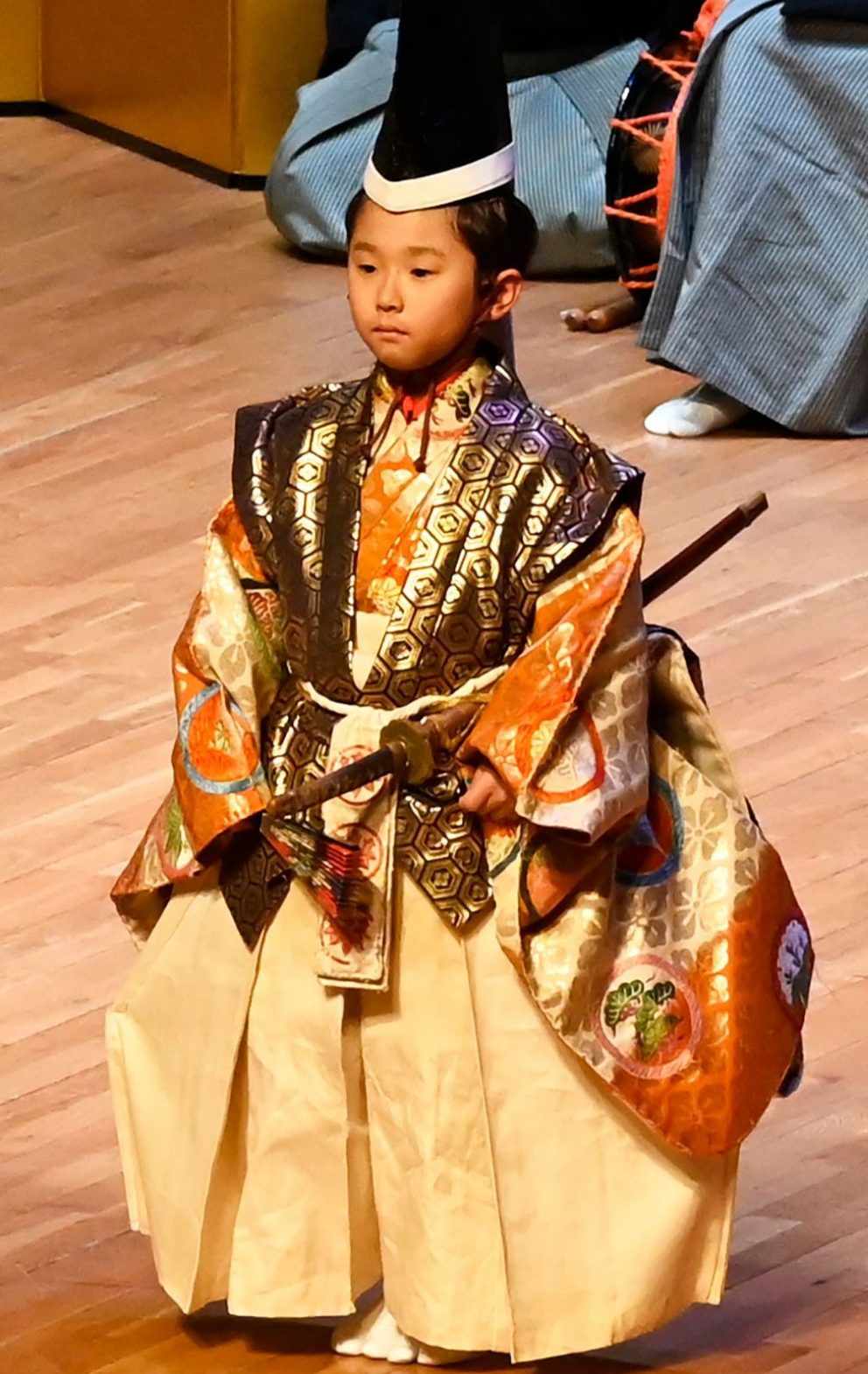
Tomoharu Hosho
Born in 2017, eldest son of Kazufusa Hosho. Performed his first role in 2021, in Kuzu Shirogashira.
Menu
Shokado Bento
In addition to luxurious dishes such as Steamed Japanese beef loin and redfish grilled in Saikyo miso, seasonal autumn ingredients such as eggplant and yam bulblet are served. So that guests can feel the essence of Noh within the meal, the boiled pumpkin is made to resemble a fan and the carrot a flute in this elaborate and delectable meal.
[Appetizers]
Redfish grilled in Saikyo miso, pickled ginger
Fresh wheat gluten, boiled pumpkin, Japanese omelet, whitefish and yam bulblet cake
Vinegared vegetables, ground sesame
[Boiled dishes]
Taro, chicken meatballs, carrot, eggplant, greensM
Soy sauce jelly
[Assorted dishes]
Steamed Japanese beef loin in vinegared soy sauce
Okahijiki greens, grilled young corn, boiled tomato
[Rice dishes]
Rolled rice with plum salt, pickles
[Soup]
Dual-colored miso soup
Nameko, mitsuba, ground Japanese pepper
Children’s Meals
Western Bento
In addition to dishes loved by elementary school students such as chicken rice, Hamburg steak, fried chicken, and fried shrimp, the menu includes dishes with vegetables such as ratatouille and green salad for balance. With dessert included too, it’s a hearty meal.
Mortadella ham, marinated chicken, pickles, pumpkin salad, green salad
Mini-corndog, ratatouille, broccoli, sauteed salmon, fried shrimp, lemon
Beef Hamburg steak in demi-glace sauce, mini-tomatoes, mixed beans, fried chicken, mashed potatoes
Chicken rice, strawberry soymilk mousse
The kids’ plate is designed for preschool-aged children. It features foods such as chicken rice, Hamburg steak, and fried chicken that are easy for small children to enjoy, and dessert as well. The smiling fries are certain to put a smile on your child’s face.
Kids’ Plate
Pumpkin salad and mini-tomatoes, fried chicken, smiling fries, mini-corndog
Corn and shrimp fricassee, chicken rice, beef Hamburg steak in demi-glace sauce with broccoli
Strawberry soymilk mousse
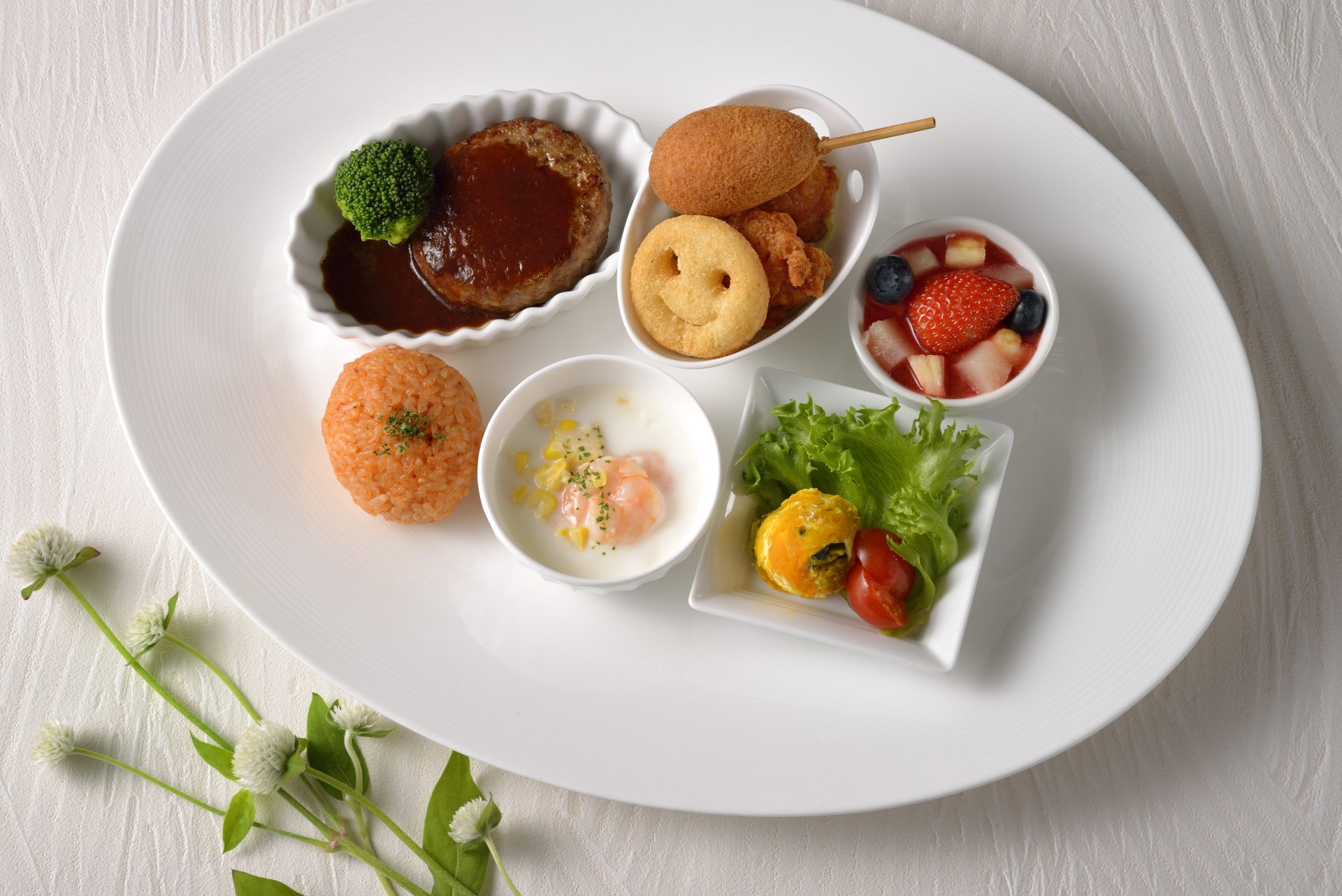
100 years since relocation of the three-story pagoda
2025 commemorates a century since the three-story pagoda, a nationally designated tangible cultural property, was moved from Chikurinji Temple to the hotel garden.
The structure originates from Chikurinji Temple, a location closely associated with Heian-era bureaucrat and poet Ono no Takamura.
Carrying on the intent of the creator of the Chinzanso garden, Duke Yamagata Aritomo, the second head of the Fujita Group, Fujita Heitaro, sought to preserve the beauty of the garden and purchased the three-story pagoda in 1925, relocating it to what is now the garden of Hotel Chinzanso Tokyo.
・Services and content may be subject to change due to domestic and international circumstances.
・Photos are for illustrative purposes only.
・Events may be canceled if the minimum number of participants is not met or due to venue circumstances.

